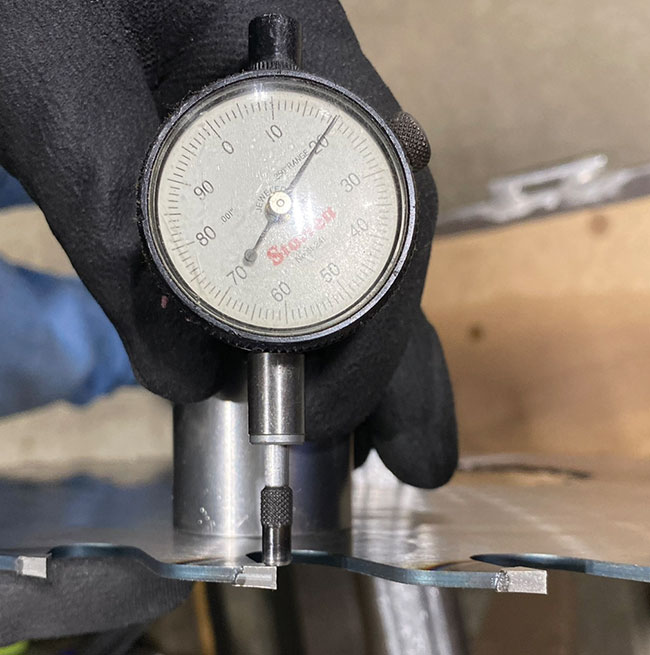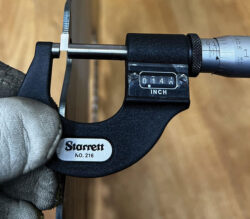
Features
Equipment
Sawmilling
Sawfiling 101: Two tools of our trade
November 6, 2023 By Paul Smith
 The side dial indicator
The side dial indicator From early on, sawfilers made and designed most of their own tools. Even today, sawfilers continue to come up with new and innovative tools to make their jobs easier and better. I always enjoy visiting filing rooms and hearing about and seeing the new tools and gadgets sawfilers have come up with to improve on their profession. Back in the day, when filing room doors were closed, sawfilers kept the tools of their trade to themselves and only shared this knowledge with upcoming filers they trained. We had the travelling salesman that would visit the filers, creating a trust between them. Filers who did not have access to a machine shop might trust their travelling salesmen with a drawing or make-shift tool to take back to their manufacturing plant and bring back a “precision filing room tool”. During those days, most of the tools that sawfilers used were either made on site or were inexpensive to purchase. Today’s sawfilers should have the mill and management’s ear when it comes to purchasing and maintaining their professional tools.
I will discuss just a couple of essential tools needed today in the filing room. These tools work together to ensure quality and accuracy.
The side dial indicator
Like most precision tools, it has varying designs, different levels of quality and cost, and is produced by multiple manufacturers. Most will perform the task at hand. However, accuracy may be more a factor of the way it is used. This tool measures side clearance and can be used to check both radial (top to bottom) and tangential (front to back) angles. This tool’s accuracy should be checked often by placing it on granite block. The dial indicator’s foot and base must be flat and should always be held properly to obtain accurate measurements.
The micrometer

The micrometer
A must in the saw filing room. It is used to check kerf and plate thickness. It’s always a good practice to double check with another device anytime it is possible. By using both – the micrometer and side dial indicator – you can be sure you’re getting correct information. The sum of the plate thickness plus side clearance on both sides of the tooth should give you the same number as the micrometer reads when checking kerf. Example: plate thickness .100 + .019 side clearance on one side + .021 on opposite side gives you .140 kerf, which should be the same number when checked with the micrometer. The micrometer can also be used to check radial and tangential angles by measuring to the far side of each and subtracting for total front to back or top to bottom measurements.
Double checking like this can save you time and problems. I have seen filers adjust their side grinding machine over and over when it’s only a bent tooth. And it’s just good practice to get this major step in grinding saw teeth correct. For long-term accuracy, the micrometer should have hardened anvils and come with a checking gauge. All measuring tools should be kept in a safe place to not be banged or dropped. They should be checked for accuracy before each use. I suggest using good, name brand, tools with protective storing cases. Tools that are well cared for should last a long time. Smith Sawmill Service – BID and most major saw manufactures can supply your filing rooms with these precision tools.
Paul Smith is a saw filing consultant and founder of Smith Sawmill Service, now part of BID Group. You can reach him at paul.smith@bidgroup.ca.
Print this page